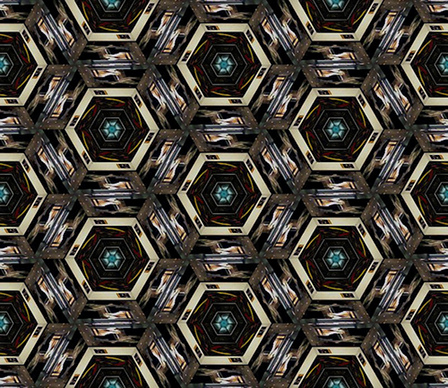The following article is excerpted from A Fuller View: Buckminster Fuller's Vision of Hope and Abundance for All, from Divine Arts Media. Edited by L. Steven Sieden (2012).
Throughout history, human civilizations have been guided by interpretations of the cosmic order. Our ancestors observed patterns in nature that profoundly influenced their beliefs and behaviors, enabling them to anticipate and synchronize with the cycles of life. By paying close attention to the world around them, countless generations developed reciprocal relationships with environments that enabled them to survive and thrive.
Today, modern technologies enable us to manipulate our surroundings in extraordinary ways. Yet they also isolate us, encouraging us to take the life-sustaining systems of our home planet for granted as endlessly exploitable resources and economic externalities. As specialized sciences increasingly seek to reduce existence to its component parts, the universe has seemingly been diminished to little more than physical properties, isolated interactions, and mathematical laws.
This materialist cosmology has effectively separated facts from value, imparting the overwhelming sense that Earth is a mediocre pale blue dot aimlessly wandering around within the infinite void of space. Though the interconnected challenges facing humanity are growing ever more complex and urgent, there seems to be little guidance or meaning to be found by paying attention to this larger context.
Buckminster Fuller challenged this limited perspective over fifty years ago, asserting that it is both incomplete and obsolete. He insisted that the sense of separation from nature is a dangerous illusion resulting from reductionism and overspecialization, and that humanity's evolutionary success is dependent on our willingness to learn from the emergent behaviors of whole systems. This led him to question how we envision the context of our existence, re-imagining a big picture in which our species is situated within the full continuum of creation. In Operating Manual for Spaceship Earth he asks,
"Can we think of, and state adequately and incisively, what we mean by universe? For universe is, inferentially, the biggest system. If we could start with universe, we would automatically avoid leaving out any strategically critical variables. We find no record as yet of man having successfully defined the universe — scientifically and comprehensively — to include the nonsimultaneous and only partially overlapping, micro-macro, always and everywhere transforming, physical and metaphysical, omni-complementary but nonidentical events."
Never one to shy away from a daunting task, Fuller redefined "Universe" (eventually differentiating it through capitalization and dropping the definite the) to include both the specialized insights of science and our metaphysical capacities and experiences. Yet he insisted that Universe is far more than simply mind plus matter, contending that the whole is always more than the sum of its reduced parts. He summarized this perspective with the pithy generalization U=MP, proposing that Universe is the synergistic result of the metaphysical multiplied by the physical (Synergetics 162.00).
Referring to humanity as "local-Universe information gatherers and problem-solvers," he strove to demonstrate how we are capable of comprehending the "relationship of eternal principles" and applying them "in support of the integrity of eternally regenerative Universe." Today this approach is recognizable within the field of biomimicry, though he set his sights even higher by exploring the possibilities of what could be called cosmomimicry.
This was far more than an intellectual exercise, as he sought to apply "macro-inclusive" and "micro-incisive" insights to the design of human-scale physical artifacts through what he called "Comprehensive Anticipatory Design Science." By spending much of his life starting with consideration of the biggest system, anticipating future trends and needs, and combining the aesthetics and intuition of design with the empirical and intellectual rigor of science, he took it upon himself to attempt to solve some of the greatest challenges he predicted would soon be facing humanity.
In the 21st century, this synergistic, systems-oriented approach is more critical than ever. At the Buckminster Fuller Institute, we are celebrating his legacy by connecting a global network of design science practitioners actively applying these principles in their own work. We are seeking out and cultivating integrated strategies designed to address Fuller's challenge to "make the world work for 100% of humanity, in the shortest possible time, through spontaneous cooperation without ecological offense or disadvantage of anyone."
Instead of defining a particular problem to be solved, we encourage participants to explore how the behavior of whole systems can inform the design of approaches that address multiple interconnected issues simultaneously. We never know what to expect, but we continue to be amazed and delighted at the extraordinary capacity humans seem to possess for applying the principles of nature to improve our world. Like Fuller, we anticipate that by paying ever-closer attention to Universe, our collective journey just might have a few more surprises in store:??"I didn't set out to design a house that hung from a pole, or to manufacture a new type of automobile, invent a new system of map projection, develop geodesic domes, or Energetic-Synergetic geometry. I started with the Universe – as an organization of energy systems of which all our experiences and possible experiences are only local instances. I could have ended up with a pair of flying slippers."
David McConville is President of the Buckminster Fuller Institute.
Image by James Mallos, courtesy of Creative Commons license.















